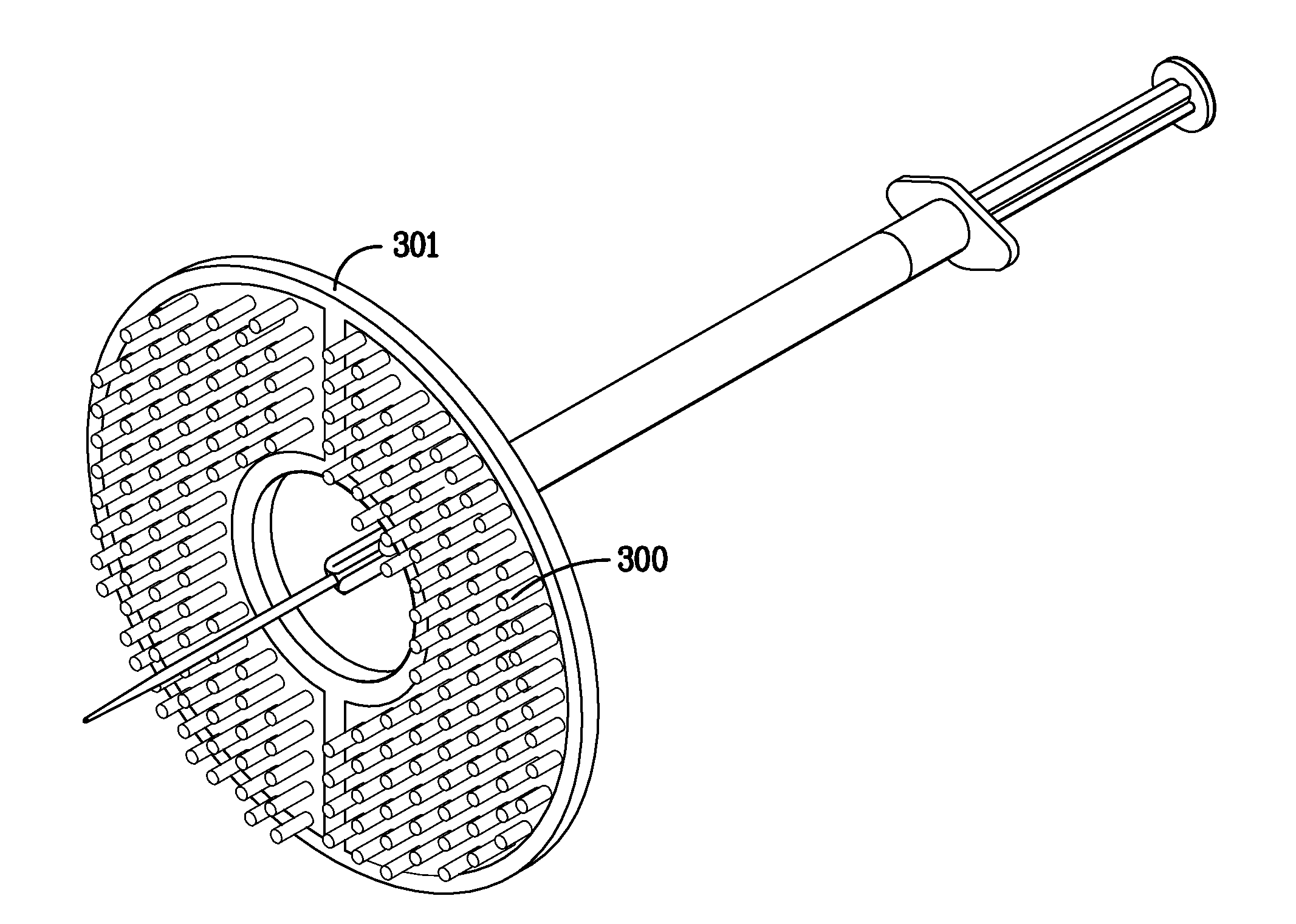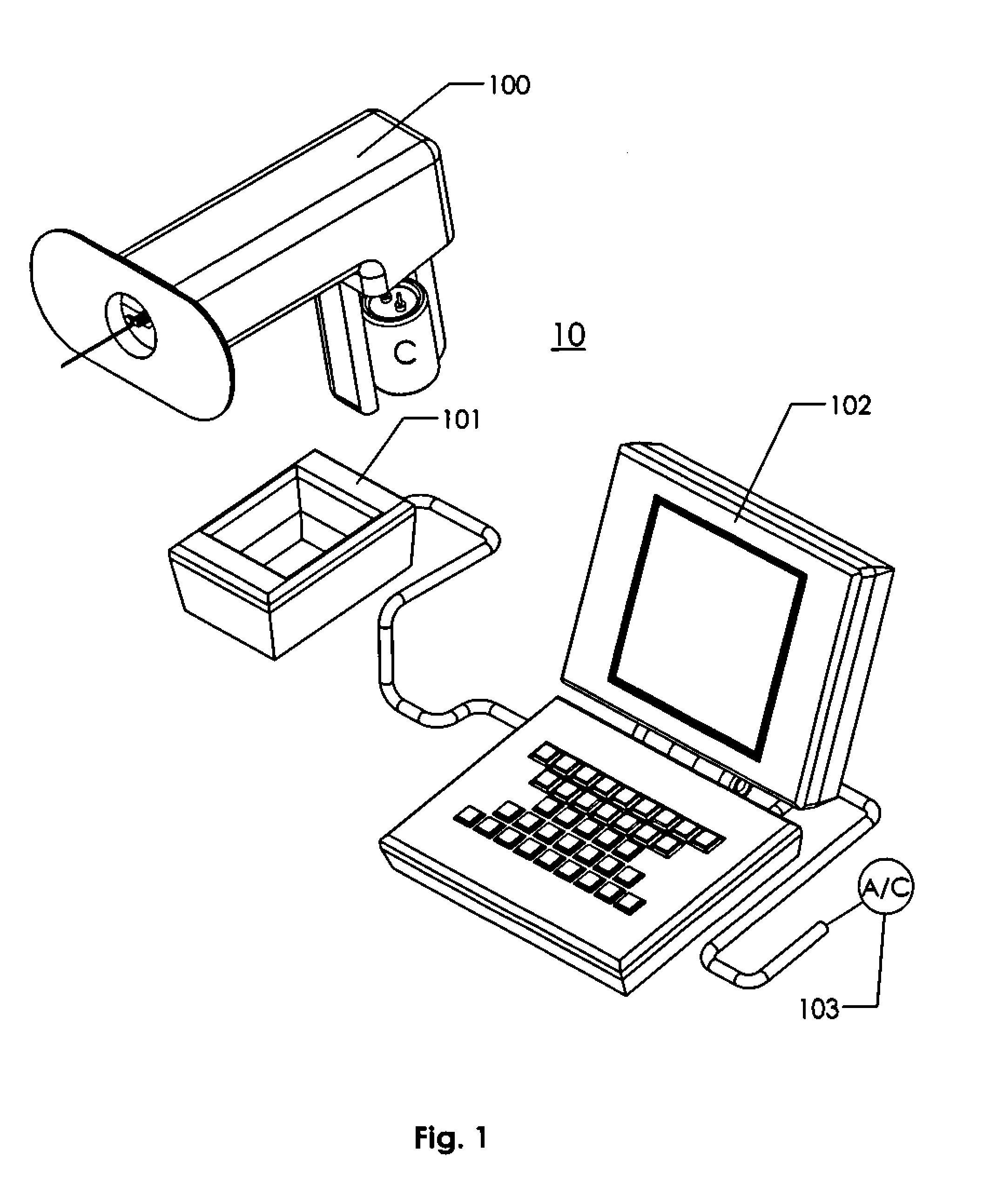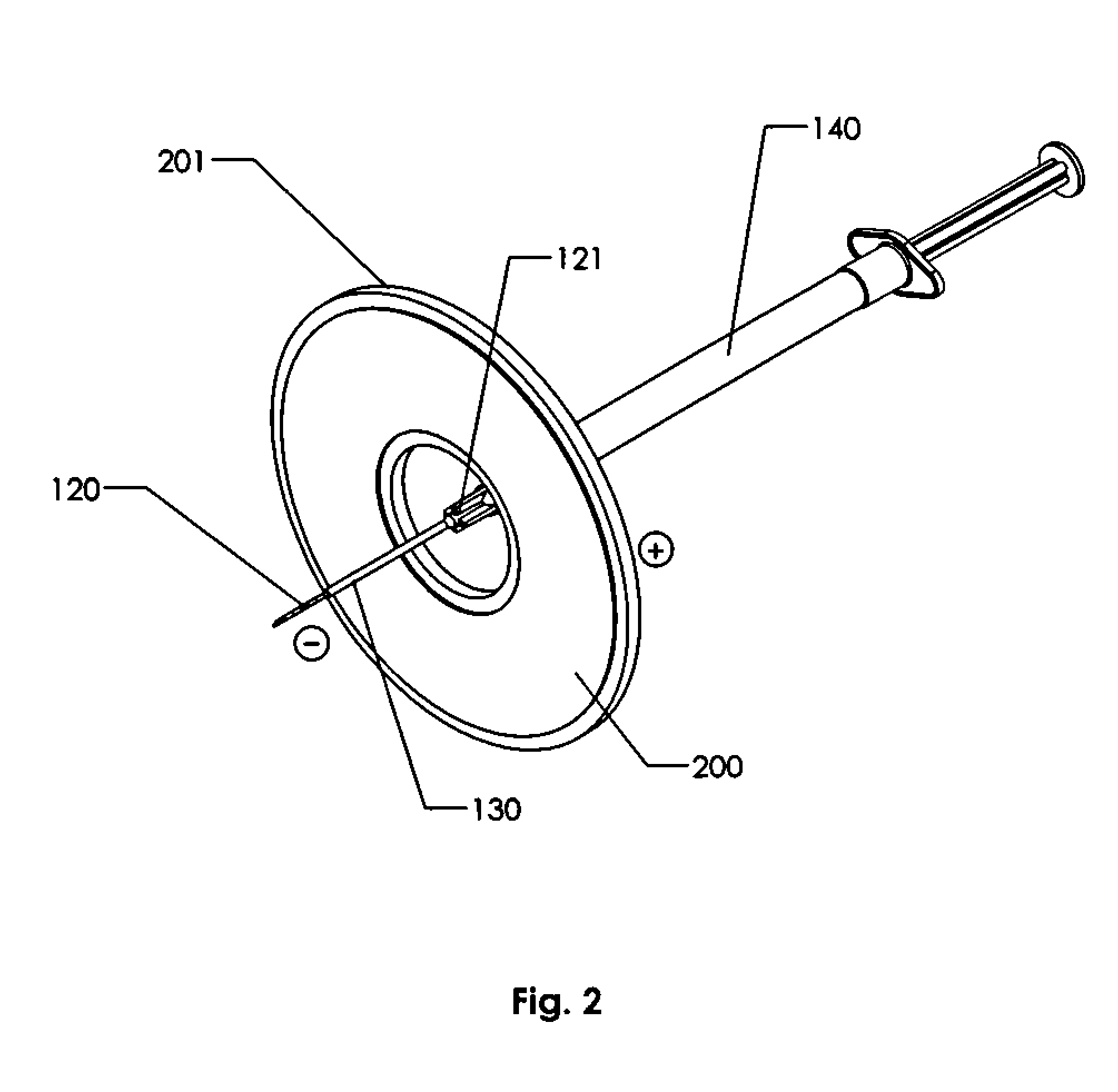Variable current density single needle electroporation system and method
a single-needle electroporation and current density technology, applied in the field of electric pulses, can solve the problems of difficult quantifiable quantification of inability to easily determine the tissue volume undergoing electroporation, and inability to measure the amount of drug being taken up by the cells outside the array
- Summary
- Abstract
- Description
- Claims
- Application Information
AI Technical Summary
Benefits of technology
Problems solved by technology
Method used
Image
Examples
example i
Rabbit Study to Show Focus of Electroporation to Tissue
[0130]In this example, the efficacy of a ring electrode system for electroporative intramuscular delivery was demonstrated using expression of Green Fluoroescing Protein (GFP) plasmid-DNA in rabbit quadriceps muscle.
[0131]Specifically, adult New Zealand white male rabbits (n=2) were treated in the quadriceps muscles with injections of 200 μL (microliter) of plasmid-DNA encoding the GFP protein and a needle penetration depth of 1.6 cm using the elongate electrode as the delivery needle. The experiment was divided between ring electrode systems incorporating alternate embodiments, specifically:
[0132]The first rabbit received 4 injections (one each into the upper and lower parts of the left and right quadriceps muscles) using either a 22 g or a 23 g injection needle for injection and as the elongate electrode. One of the four injections used two parallel uninsulated 22 g needles in the Elgen device (no ring electrode). In the remai...
PUM
 Login to View More
Login to View More Abstract
Description
Claims
Application Information
 Login to View More
Login to View More - R&D
- Intellectual Property
- Life Sciences
- Materials
- Tech Scout
- Unparalleled Data Quality
- Higher Quality Content
- 60% Fewer Hallucinations
Browse by: Latest US Patents, China's latest patents, Technical Efficacy Thesaurus, Application Domain, Technology Topic, Popular Technical Reports.
© 2025 PatSnap. All rights reserved.Legal|Privacy policy|Modern Slavery Act Transparency Statement|Sitemap|About US| Contact US: help@patsnap.com



